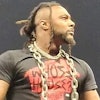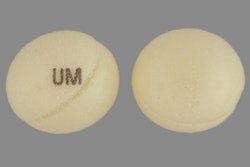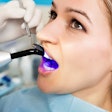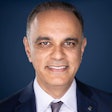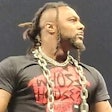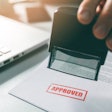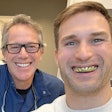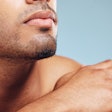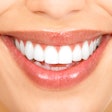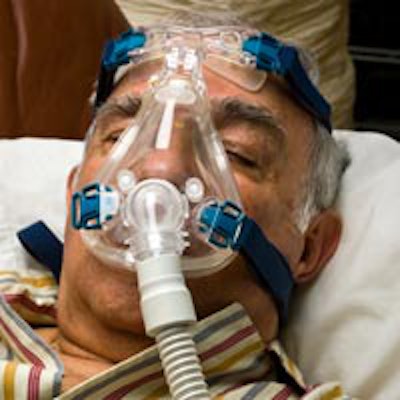
There is a growing demand for therapies to treat sleep apnea, and dentists are well-positioned to help patients understand how oral appliances, continuous positive airway pressure (CPAP) machines, and surgery can help, lecturers told a well-attended session of the recent American Association of Orthodontists (AAO) meeting in San Francisco.
"Obstructive sleep apnea is a life-killing, progressive disease that needs to be handled carefully, but with your knowledge and skills, directly with oral appliances and working with oral surgeons, you can do a number of things to help your patients," said Alan A. Lowe, DMD, PhD, a professor at the University of British Columbia and chairman of the division of orthodontics, who also has an orthodontic practice in Vancouver. "You never cure sleep apnea, and it tends to get worse as we get older," he said.
The condition has serious consequences, including high blood pressure, heart disease, stroke, and automobile accidents caused by falling asleep at the wheel, he told the session attendees.
Obstructive sleep apnea (OSA) occurs when a person stops breathing for more than 10 seconds more than five times per hour. Excessive snoring is the most well-known symptom of OSA, and 6 out of 10 men snore at age 60, Dr. Lowe noted.
"We have to look at sleep apnea as an effused airway problem," said Kasey Li, MD, DDS, a specialist in the surgical management of sleep apnea in Palo Alto, CA.
"It's not just the tongue, the soft palate, the epiglottis -- it's the entire airway. The airway is a tube and that's the problem."
A physician's medical assessment of the patient should be done before starting therapy and is also recommended after the appliance has been fully adjusted to monitor outcomes, Dr. Lowe said.
Practitioners should use titratable oral appliances that are custom-fit to patients, not "boil and bite" devices out of a box, Dr. Lowe said. Sleep physicians prescribe oral appliances for adult sleep apnea patients who can't tolerate CPAP machines or prefer an alternative therapy, he said, adding that more physicians are referring patients for oral appliances as first-line therapy.
He stressed the importance of using the right device for sleep apnea patients.
"Sticking a simple occlusal splint in a sleep apnea patient's mouth or a snorer's mouth can increase the severity of their apnea by 50%," he said during his lecture.
The current state-of-the-art titratable oral appliances can be adjusted to bring the jaw forward. Dr. Lowe's invention, the Klearway, allows 44 advancement positions for the mandible, which can be slowly titrated forward, he said.
Benefits of various sleep apnea therapies
Proper therapy can eliminate headaches for apnea patients, Dr. Lowe said, noting that a third of these patients wake up with headaches.
“When you give patients a hunk of acrylic with a few clasps on it, and they wake up without that headache they've had for 10 years, they will worship the ground you walk on.”
"When you give patients a hunk of acrylic with a few clasps on it, and they wake up without that headache they've had for 10 years, they will worship the ground you walk on," he said.
A CPAP machine, which forces air into the lungs, is good at increasing a patient's oxygenation, he said. Oral appliances simply increase size of the airway, Dr. Lowe said.
"It's like using a bigger garden hose, but it doesn't necessarily improve necessarily oxygenation," he said, adding that many patients who can't use a CPAP machine are seeking help from orthodontists.
Dr. Li said that CPAP machines are the only treatment that has been documented for improving quality of life and longevity, while reducing daytime sleepiness, car accidents, high blood pressure, heart attacks, and strokes.
"It's an excellent treatment, but nobody wants to use it; that's the problem," he said.
Surgical therapy
Some people resort to surgery in desperation, Dr. Li said.
"I've had many patients who've used [CPAP machines] for a long time come in and say, 'I'm done with it; I don't want to use it anymore. It helps me, but I can't stand it,' " he recalled.
Dr. Li performs a number of maxillomandibular advancement (MMA) surgeries, which bring the jaw, the soft palate, the epiglottis, and the base of the tongue forward.
"As surgeons, we're just airway plumbers," Dr. Li said. "But a significant component of why this operation works is that it limits the collapsibility of the airway,"
People are born with sleep apnea, he said, adding that he's seen newborns with it.
"Sleep apnea is a progressive process; nobody cures sleep apnea," Dr. Li said.
Tooth movement from oral appliances
Tooth movement may occur after wearing oral appliances for a while, Dr. Lowe noted. This side effect must be managed, and orthodontists are ideally suited to evaluate these changes, he said.
"There's a lot of bad dentistry done in America," Lowe said. "[I've seen] changes in tooth positions that are secondary to oral appliance wear that is completely contraindicated," he said. "It's just wrong. It was a big problem for me having spent my whole life as an orthodontist trying to make teeth straight, to suddenly realize that with sleep apnea appliances I was making a lot of teeth crooked."
Dr. Lowe advised the group not to overtreat patients who wear oral appliances with complex restorative treatment as tooth movement may continue over their lifetime. Improving oxygenation of the heart is a much more important outcome than the potential side effects of tooth movement in these patients, he said.
"The absolute worst thing you can do is take an appliance away from a sleep apnea patient because you've seen tooth movement," Dr. Lowe warned. "You may be professionally liable if you do that."
He knows of practitioners who have taken CPAP machines away from patients who later become sleep-deprived and drove into telephone poles and killed themselves or somebody else. The practitioners were subsequently sued and the courts have ruled in favor of the patient, Dr. Lowe said.
Many patients come in during allergy season, he noted.
"I'm really busy, because the snoring is back, and once the wife realizes she can have a silent husband, I tell you, the second night he's snoring, they're in the office and they want to be seen right away," Dr. Lowe said. "The public now knows what can be done, and the responsibility they put on us is quite significant."



